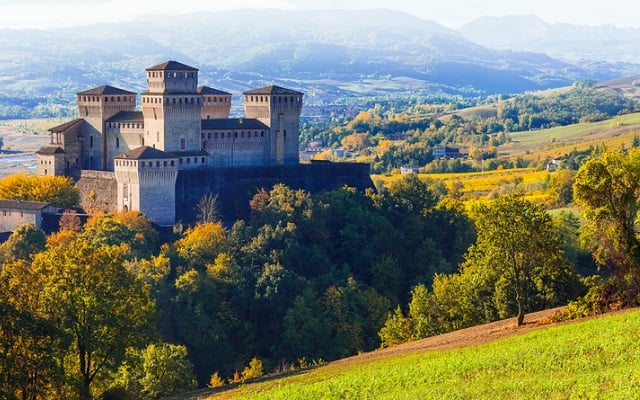Long a favourite destination among travellers in the know, Emilia-Romagna has traditionally had far fewer visitors than neighbouring Florence.
Over the past few years, however, it has found its way into many a travel guide and is particularly popular with tourists seeking a slice of the 'authentic' Italy beyond the spectacular monuments and long sandy beaches of the traditional stops on the Grand Tour.
The travel guide cited the region's food as the top reason to plan a trip there, which will come as no surprise to anyone familiar with Emilia-Romagna's reputation as the culinary heart of Italy.
READ ALSO: Why Bologna should be the next place you visit in Italy
It singled out four top dishes to try: Bolognese ragù, prosciutto di Parma, Modena's balsamic vinegar, and parmigiano reggiano (Parmesan cheese).
Not on Lonely Planet's list but also worth sampling in the area are the Bolognese Mortadella sausage, the seafood on offer along the coast, and the many varieties of stuffed pasta. One dish not to ask for, however, is spaghetti bolognese, the name for the international (and inferior, if you ask an Italian) version of ragù. The Local has delved into the mystery behind the myth here.
A side street in spectacular Ferrara. Photo: Catherine Edwards
Beyond the food, the travel publisher singled out “Bologna's FICO (the world's largest culinary theme park), Ferrara's National Museum of Italian Judaism and Shoah, and Rimini's restored Cinema Fulgor” as some of the must-visit sites in the area.
Travellers to Emilia Romagna should also consider tracking down the region's impressive religious sites, from the mosaic-adorned churches of Ravenna to Bologna's San Luca Sanctuary offering panoramic views, and the wide range of architecture including Bologna's medieval towers and porticoes (covered pavements) and Ferrara's impressive castle.
READ ALSO: Five great reasons why Parma is Italy's 2020 capital of culture
Beyond the cities, there's the Adriatic Coast to explore, and stunning off-the-beaten-track spots. Three villages deserving of a detour are fortified Montegridolfo, Bobbio – described by Hemingway as the most beautiful town in the world – and Dozza, a small village that also acts as an open-air art gallery.
Incredible Dozza.
Second on Lonely Planet's list of European travel hotspots was Cantabria in Spain, followed by Friesland in the northern Netherlands.
Last year, no Italian regions made the top ten, which ranked Zagreb as the must-visit city in Europe, though in its 2016 edition, Venice was named as the third best place to visit. Later the same year Lonely Planet placed the same city as a 'great value destination' – despite regular reports of tourists being ripped off by some restaurants.
READ ALSO:




 Please whitelist us to continue reading.
Please whitelist us to continue reading.